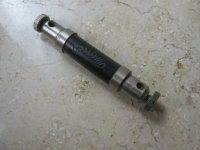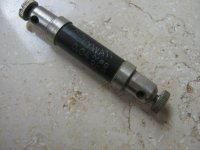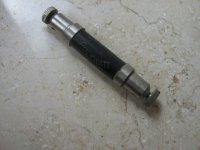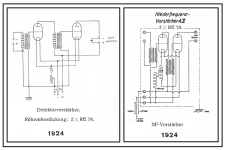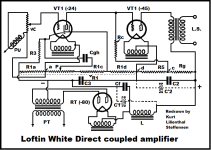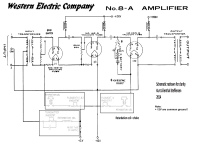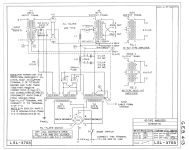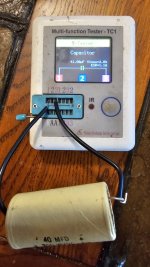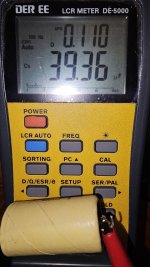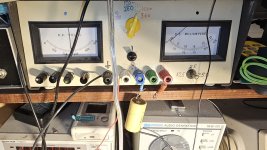I fully understand the marketing game. I worked for Motorola for 41 years, and watched it happen from the inside.....Do you think that the Motorola phone that I have has anything at all to do with the Motorola company that I worked for? No, it does not. Lenovo, the Chinese computer company owns the Motorola brand for use with cell phones. Care must be used when a company does this or brand dilution happens, and all Leica (or whoever) products become associated with Panasonic, Sony and the like.
I just mentioned the fact that the Leica brand has become relatively mainstream if only as a marketing gimmick for Panasonic. I got into photography 40+ years ago, had my own darkroom, shot large format and 35mm.... All with relatively modest equipment, often used cameras from my buddies when they upgraded. My interest waned as film died, and "they took my Kodachrome away" and Cibachrome went with it. I never had the justification for spending the big $$$ for Leica, Zeiss, or even TOTL Nikon stuff. My first SLR was a used Pentax that I paid $20 for.
When it cost you money every time you push the shutter button (even if for just film, chemicals, and enough paper for contact sheets) you take the time to set up each shot. Now it has become too easy to put the camera in auto, and hold the button down, take a zillion pictures, and maybe get one good one. When it matters, I do that with one camera on a tripod, and another in manual mode in my hand.
I do own a budget Canon DSLR, two Sony's and three Panasonics. Each has their purpose, but unlike my phones, I can dial in whatever manual settings I need for the particular moment.
I have built amps, speakers, and combos (including all the Turbo Champs) for over 50 years. Yes, those harmonics DO come from the amp, but the amp reacts to the load that it sees. It does not work alone. There is a complex interaction between the output tubes, the OPT, and the speaker, and ALL THREE together affect the way the output tubes distort the signal.
What I said here applies to all amps, but this post is aimed directly at the post referring to a 1950's Fender Champ 5C1 guitar amp, and how it deals with different load impedances presented to it by the speaker....any speaker.
OK, we both know the games of marketing industry. Maybe the cheap phone lenses were (and are) a significant part of saving Leicas ***. Early 2000 they were nearly bankrupt and were saved by private money. The management failed to turn their camera bodies into a market valued model. That first happened with the invention of the first digital M camera. Since then they found its niche in the digital world and established cooperation with the phone companies, too. I started with film some 40 years ago and always loved shooting with SLR gear, but to be honest, most of it was crap, especially the lenses. To me, they make the difference. Nobody would ever buy a Leica when lens quality were low. But they are outstanding. I like to compare it to mobile phones, but no way of competing. I could always tell the difference in the look of the pics. It's like robbing Kodachrome and replace it with a different brand.
When it comes to speakers and amps, I think its much more special and demanding to optimise for audio than for guitar amps. Just because audio is so much more than the limited guitar could produce in sound bandwith.
And only at the end of perfectioning everything I would opt for field coil speakers. They can make an audible difference, but its tiny compared to all the other ways and options a speaker and amp builder has.
Think I could say this with experience in tube amp building and speaker building, field coil and permanent magnet. It would always be a niche in todays audio business.
Last edited:
It would always be a niche in todays audio business.
Field coil speakers will always be a small part of a small market, even if only due to the added cost and complexity required.
I think its much more special and demanding to optimise for audio than for guitar amps.
These are two different markets with different marketing and engineering requirements.
In an audio speaker, the primary objective is to reproduce the original sound of the instruments, with minimal added coloration, within the usual customer's preferences. Most designs are created to minimize known distortions and cone breakup / resonance effects.
In an amplified guitar scenario, the guitar, effects, amp and speaker are all collectively part of the "instrument" itself, and interact to produce its characteristic timbre, or range of timbres. Swap out any one of these components and you will affect the "tone" of the guitar, just as swapping out the guitar player will. One player's magic sound can be another's noise.
I built the Turbo Champs from spare parts at a time when my daughter played in the high school marching band, and band kids hung out in our spare room a lot. There was a full drum set, a Roland JV1000 keyboard, a cheap Squier Strat and a crummy bass in the room at all times, and it was common for the kids to bring their own musical weapons. Most of the Champs were sold for the cost of parts to these kids. I had built one that nobody loved. It used a pair of car stereo speakers obtained when a local K-Mart closed down, as did some of the other Champs. I must admit that this amp just didn't "ROCK" but it found duty as the keyboard amp.
One of my daughter's friends got an ES-335 guitar for Christmas. He had brought it over to show off, and he plugged into the unloved amp, and it was a magical combination. It sounded just right for that guitar and the music he played on it. I gave it to him, and last I heard it went it off to college with him.
The frequency response of a guitar speaker is far from flat, and cone breakup is part of the sound. You would limit these effects in a speaker designed for a clean sounding amplified acoustic guitar, but accentuate some of them in a screaming loud lead guitar speaker. That's why there are so many different "sounds" from many different speaker models.
Sorry for derailing this thread with a discussion of 70 year old amp designs that were built 30 years ago......let's back up a few more years.
Tubelab, nice read.
You may find it interesting, the speaker for best sound of the german high end show in 1996 was build by using a famous guitar speaker (I forgot which of those brands, but one of the well known alnicos indeed) and a high quality tweeter in a big and undamped vented wood enclosure. It earned the award from a high end magazine in germany.
Just spotted it by chance when someone was selling this speaker and the interior was visible. You see, there isn't that much difference between guitar and audio speakers.
You may find it interesting, the speaker for best sound of the german high end show in 1996 was build by using a famous guitar speaker (I forgot which of those brands, but one of the well known alnicos indeed) and a high quality tweeter in a big and undamped vented wood enclosure. It earned the award from a high end magazine in germany.
Just spotted it by chance when someone was selling this speaker and the interior was visible. You see, there isn't that much difference between guitar and audio speakers.
Last edited:
I'm curious, what were the voltages used in amps 100 years ago? I see 45 and 9- volts mentioned. Was that a common B battery voltage?
Many years ago I had old photo flash units that ran on 450V batteries. Actually two 225V batteries in series that were still around, tho rare. Can't think they would have lasted long on a Class-A amp, tho.
Many years ago I had old photo flash units that ran on 450V batteries. Actually two 225V batteries in series that were still around, tho rare. Can't think they would have lasted long on a Class-A amp, tho.
The common B battery voltages that I have seen are 45 volts and 90 volts for fixed applications. Some equipment used as many as 3 X 45 volt batteries in series with stuff connected to each tap. They recommend rotating the batteries to ensure even wear.
Many portable radios used 45, 67.5 volt or 90 volt B batteries and a few "C" or "D" cells for filament power.
Pencil tube hearing aids often used a 22.5 volt battery like those found on old Simpson 260 meters.
The Zenith Transoceanic used a custom "brick" battery with a 90 volt B and 9 volt A output. There are solid state switching bricks that contain "D" cells to replace these today.
Many portable radios used 45, 67.5 volt or 90 volt B batteries and a few "C" or "D" cells for filament power.
Pencil tube hearing aids often used a 22.5 volt battery like those found on old Simpson 260 meters.
The Zenith Transoceanic used a custom "brick" battery with a 90 volt B and 9 volt A output. There are solid state switching bricks that contain "D" cells to replace these today.
Earlier radios used a lead acid rechargeable battery for the heater supply you took it down to the local radio shop for recharging.
90 Volts was a later standard .
90 Volts was a later standard .
The Tungar (TUNGsten - ARgon) transformer / rectifier was usually used for home charging of that 6 volt lead acid storage battery in the "A" (filament) supply. Some were also made for automotive battery chargers which were also 6 volts in the early days.
My grandfather had an old Tungar battery charger that he used for electroplating and small scale welding since they were inherently current limiting.
The voltage with no load might be as high as 40 volts, but large voltage drops when pulling multiple amps of current were common.
The old radios were not so picky about the exact voltage on the B supply, but the raw unfiltered power from a Tungar rectifier would be far too full of hum inducing ripple for the "B" supply unless it was made for that purpose with some filter caps. Good capacitors for hum filtering were not common yet. Some places still had 25 cycle (Hz) power, and many rural places had no house power....hence the batteries.
Some old radios and equipment still needed a "C" supply for negative bias. This was often a 15 or 22.5 volt carbon zinc pack like the "B" battery, but smaller since virtually no current was drawn. Often "B" and "C" were in the same pack.
I remember playing with some old Eveready radio batteries as a kid. They were rectangular paper covered boxes with a 4 or 5 pin receptacle in the top. we would stick wires in the holes and zap things with them.
Each put out 22.5 volts and 45 volts. We really didn't understand then, but the 22.5 volt side was useless (no current capability) but three of the 45 volt sides wired in series could light a 25 watt bulb, or run a 5 tube AA5 radio if you got the plug polarity right.
My grandfather had an old Tungar battery charger that he used for electroplating and small scale welding since they were inherently current limiting.
The voltage with no load might be as high as 40 volts, but large voltage drops when pulling multiple amps of current were common.
The old radios were not so picky about the exact voltage on the B supply, but the raw unfiltered power from a Tungar rectifier would be far too full of hum inducing ripple for the "B" supply unless it was made for that purpose with some filter caps. Good capacitors for hum filtering were not common yet. Some places still had 25 cycle (Hz) power, and many rural places had no house power....hence the batteries.
Some old radios and equipment still needed a "C" supply for negative bias. This was often a 15 or 22.5 volt carbon zinc pack like the "B" battery, but smaller since virtually no current was drawn. Often "B" and "C" were in the same pack.
I remember playing with some old Eveready radio batteries as a kid. They were rectangular paper covered boxes with a 4 or 5 pin receptacle in the top. we would stick wires in the holes and zap things with them.
Each put out 22.5 volts and 45 volts. We really didn't understand then, but the 22.5 volt side was useless (no current capability) but three of the 45 volt sides wired in series could light a 25 watt bulb, or run a 5 tube AA5 radio if you got the plug polarity right.
Inadvertently joining this thread as I am doing research for my own “1920s” guitar amplifier project and have a couple Ferranti transformers coming my way.
When I lived in Suffolk UK, way in the sticks in 1953, we had no public supply AC electric till 1967; you are quite right we had a Roberts 90V battery radio (huge) with 1.5V side for DF tubes, but apart from recharging other batteries at the local garage, worse was to come. I had a small 5W guitar amp with a vibrator power supply that could run from 6V. Many cars then had only 6V batteries. The car radio also had a vibrator to generate the B+. Anyone remember the interference they created ? Don´t get too thrilled over these electromechanical devices, they were quite unreliable.Earlier radios used a lead acid rechargeable battery for the heater supply you took it down to the local radio shop for recharging.
90 Volts was a later standard .
Bench Baron
The coherer was useful only for telegraphy, not for audio, because it relied on a mechanical shaker.Since the Galena "coherer" was performing solid state rectification even before tubes ...
But the crystal detector was used after 1902 for small signal demodulation. A crude point contact diode with a piece of lead sulfide and a thin wire touching lt's surface. Required frequent mechanical re-adjustment to work proprrly.ä though.
Such a detector receiver did not even require an amplifier when headphones were used.
100 Years ago not only DIY projects often did not use soldering but nuts, bolts and screws to interconnect.
(scroll thru the pictures for the internals)
https://www.radiomuseum.org/r/bostonscal_detector_2_stage_amplifi.html
Here's a resistor from that time in my possession. It is 4cm long. The marking says:
DRALOWID
POLYWATT
0,04 meg ohm
D.R.P. D.R.G.M. which stands for Deutsches Reichs Patent Deutsches Reichs Gebrauchs Muster (utility patent or petty patent)
It still measures 47kohm ...
(scroll thru the pictures for the internals)
https://www.radiomuseum.org/r/bostonscal_detector_2_stage_amplifi.html
Here's a resistor from that time in my possession. It is 4cm long. The marking says:
DRALOWID
POLYWATT
0,04 meg ohm
D.R.P. D.R.G.M. which stands for Deutsches Reichs Patent Deutsches Reichs Gebrauchs Muster (utility patent or petty patent)
It still measures 47kohm ...
Attachments
Last edited:
Some amplifier circuits from the time 1924 ... 1930:
Western Electric No.8-A (1925)
Loftin White Direct Coupled (1929)
AEG (1924)
WE 42-A Push-Pull complete with mains transformer and rectifier (1928)
Western Electric No.8-A (1925)
Loftin White Direct Coupled (1929)
AEG (1924)
WE 42-A Push-Pull complete with mains transformer and rectifier (1928)
Attachments
Last edited:
Reference required re the use of Galena in a coherer.Since the Galena "coherer" was performing solid state rectification even before tubes
Testing about 75 YO cap, 40 uF/250V. Still, 39 uF capacitance, for the leakage current.
It is connected to a bench power supply through 100k resistor, as you may see from the picture. PS voltage is 272V, voltage on the cap is 271V measured by Innova 3320. So, you may calculate the current about less than 10 micro amperes... The cap is rated for 250V, by the way.
First connection: about 10 uA, second day: about 1 uA, third day: 0.4 uA.
It is connected to a bench power supply through 100k resistor, as you may see from the picture. PS voltage is 272V, voltage on the cap is 271V measured by Innova 3320. So, you may calculate the current about less than 10 micro amperes... The cap is rated for 250V, by the way.
First connection: about 10 uA, second day: about 1 uA, third day: 0.4 uA.
Attachments
- Home
- Amplifiers
- Tubes / Valves
- 100 year old amplifier.
